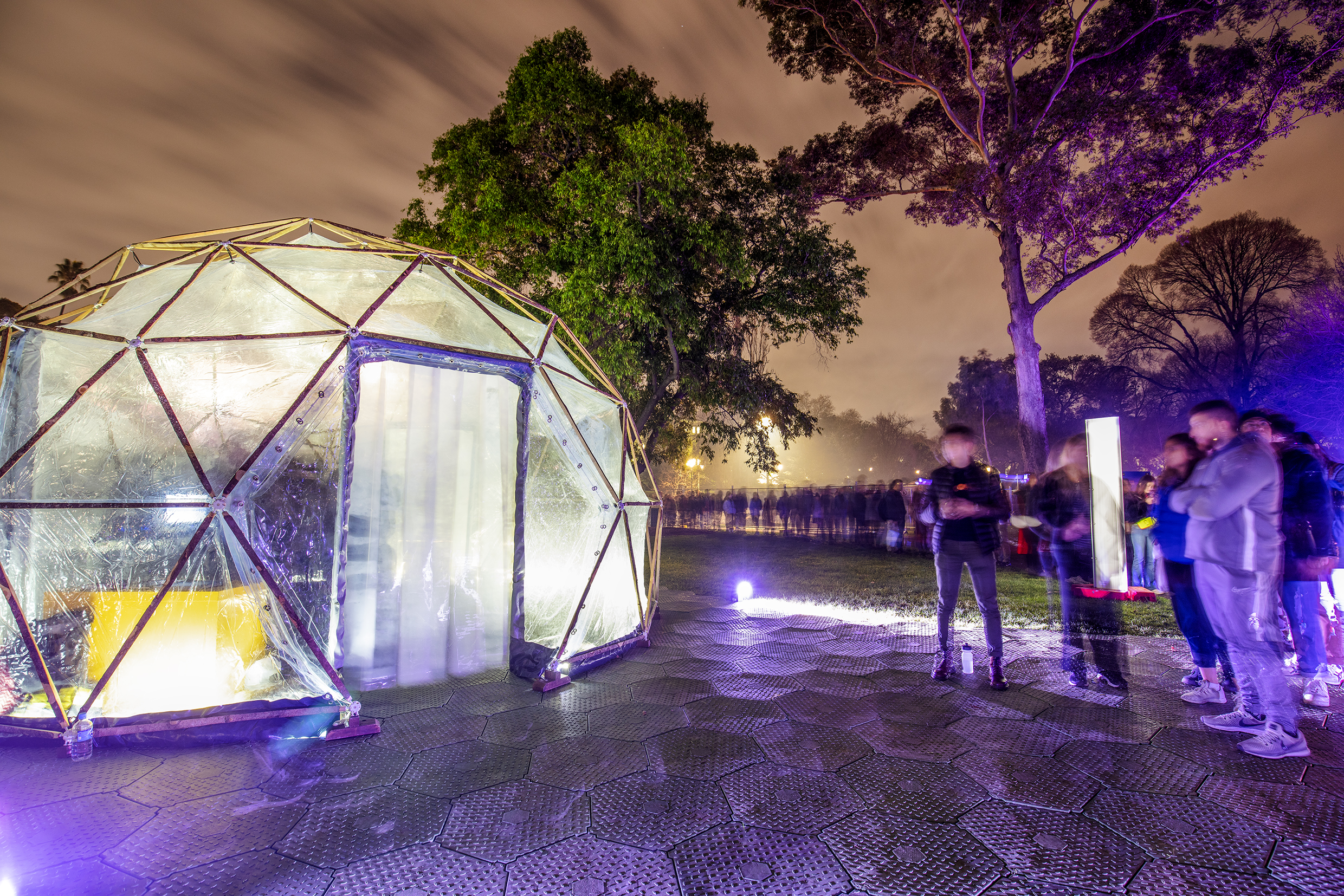
The young and curious: How Science Gallery can break down silos

An innovative longitudinal study will explore and challenge what young people want from their cultural institutions
Published 13 January 2020
A new study is hoping to discover why a group of 15 to 25-year-old Melburnians are spending their free time co-designing exhibitions, events and programs - without receiving any formal credentials in return.
The group is part of Science Gallery Melbourne, the Australian node within the Global Science Gallery Network, which spans seven countries and counting. The organisation offers a safe space for young people to explore today’s complex ethical challenges around issues like mental health and waste, by bringing science and art together in new and exciting ways.

Each gallery is embedded within a university and draws on a wide range of disciplines to bring its vision to life. So far, the University of Melbourne arm has hosted three pop-up exhibitions, with its permanent home on Swanston Street due to open to the public in 2021.
To ‘keep young voices front and centre’, Science Gallery Melbourne issued a call for young people to join the SciCurious advisory group in 2018. Participants signed up for two years to help the gallery plan its programs.
When Dr Kathryn Coleman, an expert in digital curatorial practice based at the University of Melbourne, heard about the group, she jumped at the opportunity to dig deeper.

“I sat at that first meeting and heard about this amazing new gallery that was providing answers to all the questions I had about identity and creativity and practice” says Dr Coleman, from the Melbourne Graduate School of Education.
“Too much of what we do in institutions is in a silo – you’re an artist, a scientist, a mathematician or writer, rather than simply a creative identity. No gallery had played in that space in the middle before.”
Dr Coleman’s longitudinal study, which has been co-designed with Science Gallery staff and the SciCurious participants, will consider what young people are looking for from cultural institutions, how education programs can better engage young people and the social and cultural impact of being part of SciCurious.
“It’s an amazing opportunity for the University and other education institutions to learn from young people; what makes them want to be challenged by ideas outside of their normal learning frames?” Dr Coleman says. “What does a professional learning community of young people look like?”

SciCurious and Science Gallery more broadly are tapping into a growing motivation among many young people to be part of change, says Dr Coleman.
“We see it in climate crisis marches around the world – young people are searching, striving, seeking a community to help them think about the big ideas they’re challenged by.”
While SciCurious is dedicated to advising Science Gallery Melbourne, internationally the organisation includes a group of young people as part of its governance at every site.

“We know from the World Economic Forum that young people trust very few organisations these days,” says Sarah Durcan, Global Operations Manager for Science Gallery International.
“But they still have a large degree of trust in universities and in museums and cultural organisations. That gives us a huge responsibility for how we give them voice and agency.”
Ms Durcan says the research will help to quantify the organisation’s impact, which has been difficult to date.
“Measuring impact from exhibition to exhibition is very difficult, but the benefit of being based in a university is being connected with these amazing minds who can figure out how to measure it, and then be around long enough to do so from year to year,” she says.
“It’s absolutely brilliant for us, 12 years after Science Gallery started in Dublin, to have a university of the calibre and ambition of Melbourne taking on a serious piece of research about what we’re doing.”

The researchers will begin collecting ethics approved baseline survey data from Melbourne’s SciCurious group in January 2020, which they will repeat at every meeting to examine how their attitudes are shifting.
“We’re looking at matters like their relationships with the gallery itself, other formal institutions and their education institutions, how they self-identify and their social and cultural participation outside of SciCurious,” says Dr Coleman.
They are also collecting the gifs, memes and other ‘digital artefacts’ the participants use to communicate with one another as an authentic record of how they feel about being in the group. This is part of the co-designed co-research with SciCurious participants and the artefacts will be stored in a private back-end space of a website, the front-end of which provides a record of their participation.

Arts & Culture
Making a lasting impression
Collecting digital data in this way will allow the researchers to “deep dive critically” without asking participants to write long survey responses.
“We’re capturing what they would use to express themselves anyway,” says Dr Coleman.
“A gif that says ‘I’m excited’, like a dog bouncing on a trampoline, is completely different to a written response. It captures exactly how they’re feeling in that moment.”
While the study is initially running for two years to the middle of next year, when the inaugural SciCurious group finish their term, Dr Coleman and her colleagues are hoping to continue the project with the next group of participants when they start.
“I hope it will show that Science Gallery empowers young people and gives them the confidence to be civically engaged; to understand their own potential and the potential of other disciplines, as well as the value of expertise, research and informal learning,” says Ms Durcan.
“It’s transforming the University from within by showing the validity and potential of informal learning.”
Banner image: Attendees at a Science Gallery Melbourne exhibition. Picture: Supplied
